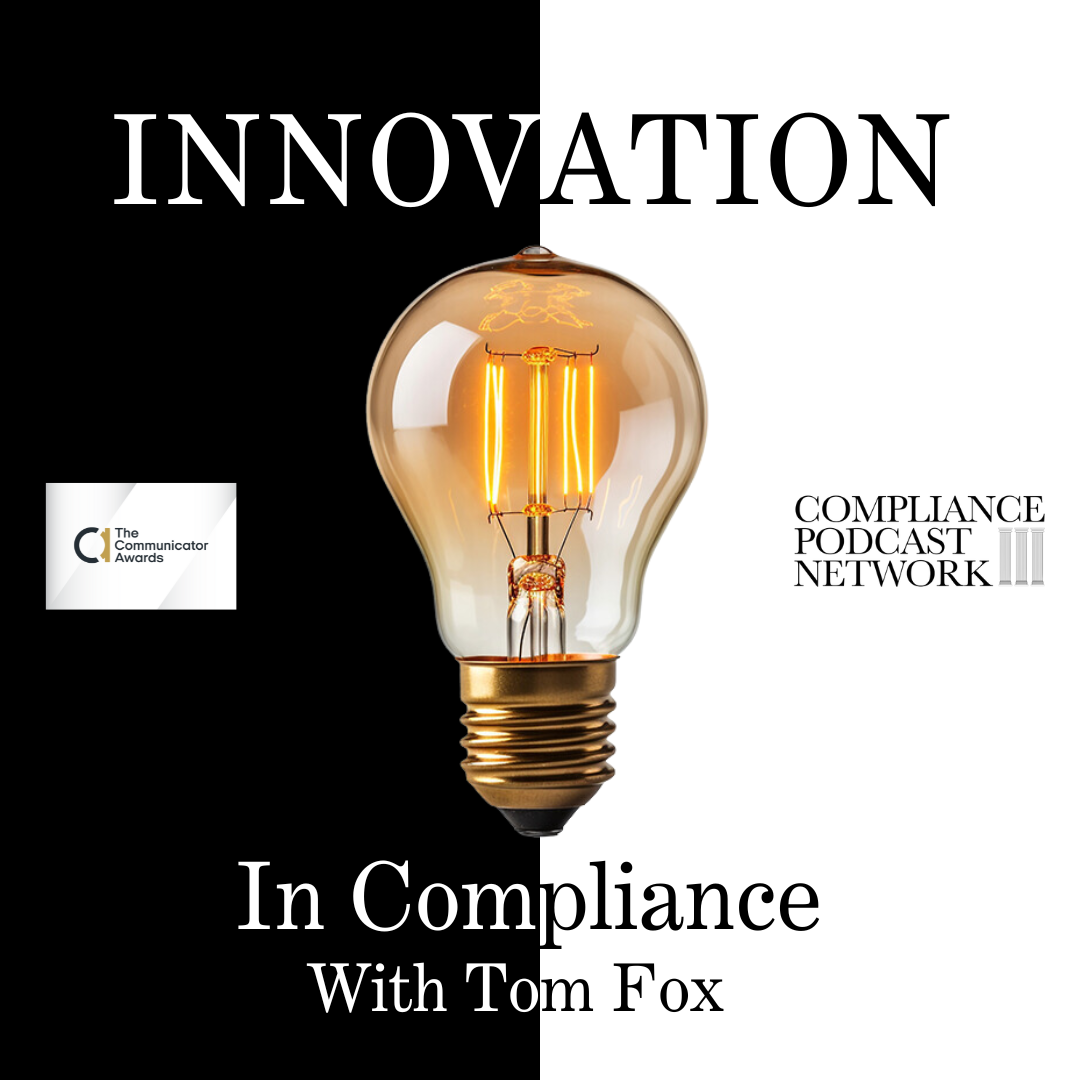Have you heard these common myths about anti-money laundering technology solutions? Myth 1: Anti-money laundering technology solutions are only necessary for financial institutions. Myth 2: Anti-money laundering technology solutions are too complex and expensive for small businesses. Myth 3: Anti-money laundering technology solutions can eliminate the need for manual compliance efforts.
I recently had the opportunity to visit with Matt DeLauro, the Chief Revenue Officer at SEON, to explore these and other questions. (You can listen to the episode on Innovation in Compliance.) We considered the impact of real-time detection services and the importance of breaking through traditional data silos for a robust approach to fraud prevention and regulatory compliance. We also considered security measures such as device fingerprinting, the evolution of Suspicious Activity Reports, and the future landscape of compliance and anti-fraud efforts, and this episode offers a wealth of knowledge for compliance practitioners and professionals.
We also considered the critical importance of Anti Money Laundering (AML) regulations, particularly in the wake of increased sanctioned activities within European banking systems. Regulatory bodies emphasize the need for heightened AML efforts in the financial industry to combat money laundering and ensure compliance. Machine learning emerges as a key tool in detecting anomalies and potential money laundering attempts, with companies like SEON at the forefront with their integrated machine learning algorithms.
How can compliance professionals stay ahead of increasingly sophisticated money launderers and fraudsters? Financial crimes are evolving rapidly, but innovative RegTech solutions give compliance teams new tools. One interesting approach is to leverage device fingerprinting for fraud prevention. Device fingerprinting analyzes device metadata like location, typing patterns, and orientation to catch real-time account takeovers and bot attacks. By gathering intelligence on the device, compliance teams can identify suspicious access attempts and stop fraudsters.
Moreover, detecting and preventing fraudulent activities necessitates monitoring anomalous behaviors, such as unusual device access or IP addresses. Utilizing device fingerprinting data, behavioral biometrics, and machine learning algorithms can help identify patterns of fraudulent activities and enable real-time fraud detection to thwart fraudulent transactions instantly.
Another approach is through scaling monitoring with machine learning. This is because reviewing transactions manually is hugely time-intensive and limits scalability. Machine learning models overcome this by continually improving detection rates and reducing reliance on large manual review teams. Such an approach can identify complex schemes that rules-based systems miss and enable businesses to expand without compromising compliance. Continuously training machine learning models to enhance detection capabilities and prevent fraud in real time can aid in fraud detection and prevention. By feeding back labeled data on identified fraud or money laundering attempts into the machine learning algorithms, companies can improve detection accuracy over time.
This approach can be enhanced by unifying siloed data sources (this is the converse of how the Department of Justice presented this to compliance professionals, of breaking down data silos.) Centralizing compliance data from across departments gives investigators a holistic view of risk. This prevents the need to manually compile relevant information from separate systems, speeding up reviews and providing broader context.
Another financial crime protection strategy is to generate SARs automatically. This approach uses large language models, which can auto-generate the lengthy suspicious activity reports (SARs) regulators require. Rather than investigators manually piecing together all the details over hours, smart software reduces it to a few clicks, saving significant time and effort. Automation has revolutionized the generation of Suspicious Activity Reports, reducing the time spent on investigations and increasing efficiency. Centralized data and machine learning capabilities are crucial for better detecting potential fraudulent activities and streamlining the reporting process.
Leading compliance teams are embracing RegTech solutions to strengthen financial crime defenses in the face of growing threats from organized fraud rings and money laundering networks. The future will require even more agility to counter emerging criminal tactics. In the evolving landscape of financial crimes, with fraudsters leveraging sophisticated techniques and interconnected networks to bypass traditional controls, companies must adapt and innovate their fraud and compliance strategies to stay ahead of the curve in combating financial crimes. To drive this point home, DeLauro encapsulates the urgency and necessity for adaptive anti-money laundering measures with the following: “Companies that have a static or maybe a long-standing permanent set of controls around fraud and compliance get figured out by the fraudsters and the money launderers very quickly.”
As AML regulations take center stage as a national security priority, the podcast episode underscores the pivotal role of automation, machine learning, and continuous innovation in strengthening AML efforts and safeguarding financial ecosystems against fraudulent activities. Matt DeLauro’s insights shed light on the dynamic landscape of financial crimes and the imperative for organizations to embrace proactive prevention strategies to combat money laundering effectively.















 Korrine Kohm is CSS’s Director of Retail Wealth Manager Services. Prior to CSS, Korrine was the Chief Compliance Officer and Head of Operations at Estabrook Capital Management where she was responsible for all compliance functions of this SEC-registered, $2.1B investment advisory firm. Korrine began her regulatory career while working at Allied Irish Bank (NY) in the Operations Department where she was a key member of AIB’s Compliance Committee, responsible for ensuring compliance with Federal and State regulations. An active member of the National Society of Compliance Professionals for over 10 years, Korrine earned her Investment Adviser Certified Compliance Professional (IACCPTM) designation in 2006, is a member of the Association of Certified Fraud Examiners, and obtained her Certified Fraud Examiner designation. In addition to her experience in compliance and banking, Korrine began the 16-week intensive training course in Quantico, Virginia, to become a Special Agent with the Federal Bureau of Investigation. She has particular experience in crafting customized policies and procedures, developing and implementing compliance programs, conducting on-site compliance reviews, acquisition due diligence reviews, risk assessments and mock SEC examinations. She routinely councils clients on various regulatory matters, including SEC registration issues, social media and advertising, policies related to diminished financial capacity, disclosures and the annual review process.
Korrine Kohm is CSS’s Director of Retail Wealth Manager Services. Prior to CSS, Korrine was the Chief Compliance Officer and Head of Operations at Estabrook Capital Management where she was responsible for all compliance functions of this SEC-registered, $2.1B investment advisory firm. Korrine began her regulatory career while working at Allied Irish Bank (NY) in the Operations Department where she was a key member of AIB’s Compliance Committee, responsible for ensuring compliance with Federal and State regulations. An active member of the National Society of Compliance Professionals for over 10 years, Korrine earned her Investment Adviser Certified Compliance Professional (IACCPTM) designation in 2006, is a member of the Association of Certified Fraud Examiners, and obtained her Certified Fraud Examiner designation. In addition to her experience in compliance and banking, Korrine began the 16-week intensive training course in Quantico, Virginia, to become a Special Agent with the Federal Bureau of Investigation. She has particular experience in crafting customized policies and procedures, developing and implementing compliance programs, conducting on-site compliance reviews, acquisition due diligence reviews, risk assessments and mock SEC examinations. She routinely councils clients on various regulatory matters, including SEC registration issues, social media and advertising, policies related to diminished financial capacity, disclosures and the annual review process.








